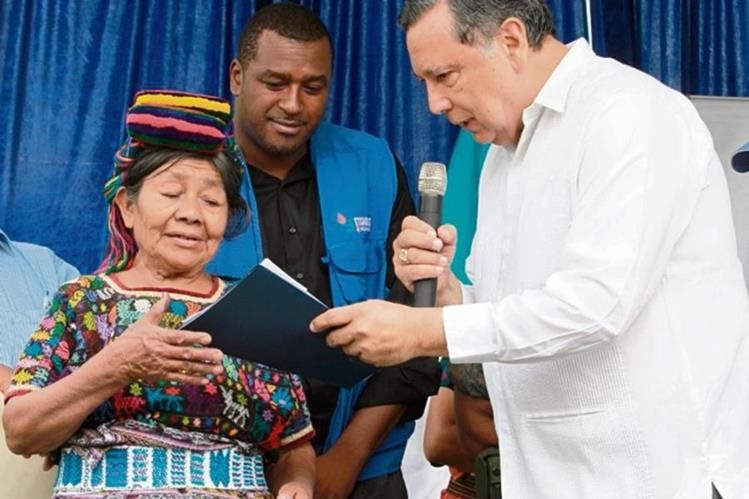Historical Campaign
For more than twenty years, communities affected by the Chixoy Dam have demanded reparations for the damages caused by the project, which was built during Guatemala’s repressive military dictatorship. The project, financed by the World Bank and the Inter-American Development Bank, was built on the Chixoy River in the early 1980s and forcibly displaced more than 3,500 Maya Achi community members. About 11,000 people were affected in total. When community members opposed relocation and sought better compensation, they were kidnapped, tortured and massacred. For years survivors have lived in extreme poverty but never given up their call for justice.
On April 10, 2010 after a decades-long struggle, the Reparations Plan for Damages Suffered by the Communities Affected by the Construction of the Chixoy Dam was finally signed and agreed to by all parties, which involved the participation and approval of communities and the government. This was a huge victory for the communities.
“What we want most is the end of this type of human rights violations. The international financial institutions, governments and investors should stop manipulating communities and deceiving people to build their projects.”
Juan de Dios García, COCAHICH (Coordinadora de Comunidades afectadas por la construcción de la hidroeléctrica)
Background
In 1975, Guatemala’s Instituto Nacional de Electrificación (INDE) approved designs for the Chixoy Dam, financed it, and began construction without notifying the local population. INDE did not conduct a comprehensive census of affected peoples, nor did it legally acquire the land supporting the construction works, the dam, the reservoir and the hydroelectric generation facility. The utility had no plan to offer compensation, resettlement and alternative livelihoods for the 3,500 (mostly Mayan) residents who would be displaced, or for the thousands in surrounding communities who faced the flooding of their land and other property.
There is considerable evidence that the financiers were aware of the problems early on, but both the Inter-American Development Bank and the World Bank continued to loan money to the project despite that fact.
When construction was complete and reservoir waters rose in January 1983, military and civil patrols undertook the forced removal of the population at gunpoint. In one village alone – Río Negro – 444 of the 791 inhabitants were killed. By January 1983, ten communities in the Chixoy River Basin had been destroyed by massacre: Río Negro, Los Encuentros, La Laguna, Agua Fría, Comalmapa, Jocotales, Chitucan, Los Mangales, Pacaal, and Hacienda Chitucan. More than a decade later, the Guatemalan Truth Commission (Comisión para el Esclarecimiento Histórico – CEH) found that this state–sponsored violence constituted genocide.
International Rivers and partners supported the communities in their decades-long and ultimately successful bid for reparations.
Threats
During Donald Trump’s administration, the office in charge of handling reparations was shut down, impeding the timely and consistent delivery of reparations. This is impacting the wellbeing of communities that have already suffered so much.
Quick Facts
- By the time the Chixoy Dam was completed in 1985, 450 Maya Achi people had been massacred.
- During the Chixoy Dam’s construction, at least 11,000 people were displaced from their homes and lands.
- In 2010, these communities signed a reparations agreement; in 2014 the U.S. Congress voted to provide the reparations, which pressured the Guatemalan government to finally take action.

